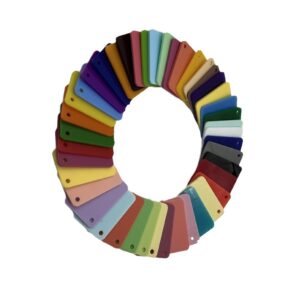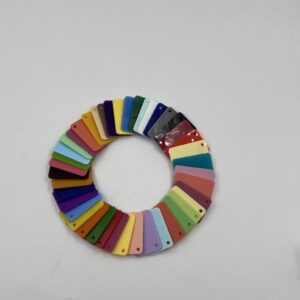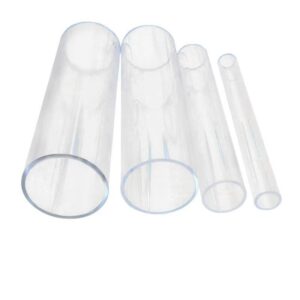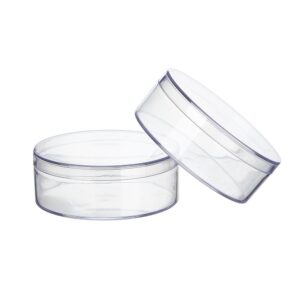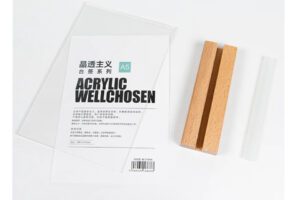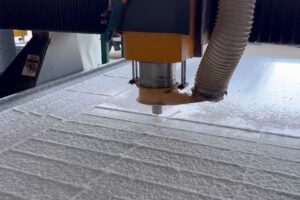Summary
Acrylic boxes, renowned for their clarity and versatility, have gained popularity across various industries, including retail, packaging, and decoration. Despite their widespread use, the expense associated with acrylic boxes often raises questions among consumers and manufacturers alike. Notable for their high-quality aesthetic appeal and durability, these products command higher prices due to a combination of factors related to material quality, manufacturing processes, design considerations, and market dynamics.
Table of Contents
The primary driver of the cost of acrylic boxes is the quality of the materials used. Acrylic, a type of polymethyl methacrylate (PMMA), is available in different grades and thicknesses, with premium variants offering superior optical clarity, impact resistance, and longevity. Consequently, the choice of materials significantly impacts both the price and the overall performance of the final product. Additionally, the methods employed in manufacturing acrylic boxes—extrusion versus casting—also play a critical role in determining costs. While extrusion is more cost-effective, casting results in higher-quality, homogeneous products that are often preferred for premium applications.
Customization further complicates pricing, as businesses often require unique de- signs tailored to specific branding needs. The intricacy of these designs, along with the choice of materials and production techniques, can lead to varying costs.
Collaboration with skilled manufacturers is essential to achieve desired functionality and aesthetics, resulting in an investment that reflects both craftsmanship and quality. Environmental concerns are increasingly shaping the market for acrylic boxes. The sustainability of materials and production practices is becoming a focal point for consumers, prompting manufacturers to adopt eco-friendly approaches and integrate recycled materials into their products. However, the challenges of recycling acrylic and addressing its environmental impact remain contentious issues within the industry, contributing to the complex landscape surrounding the pricing of acrylic boxes.
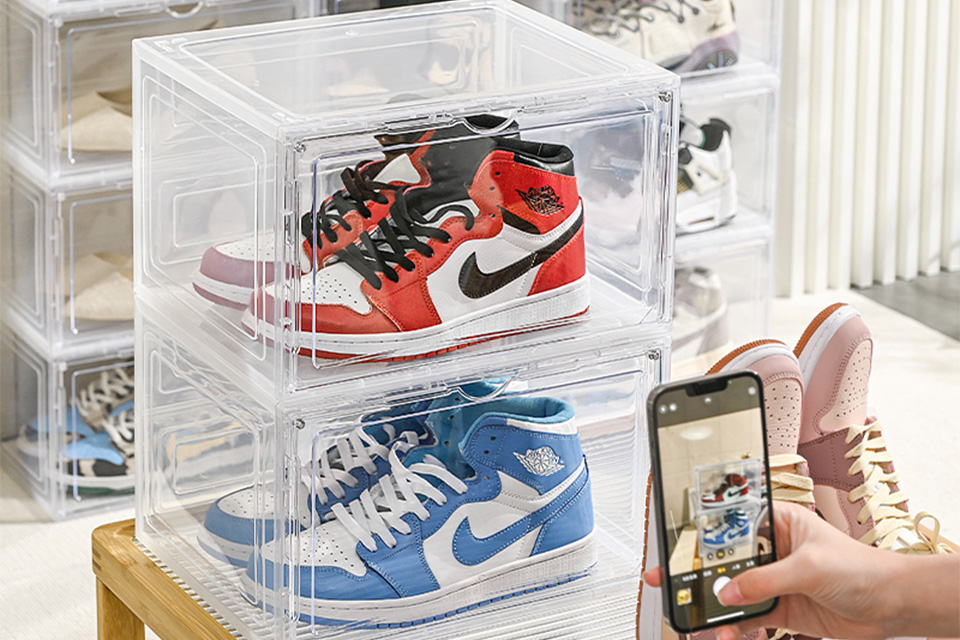
Material Quality
The quality of materials used in the production of acrylic boxes plays a significant role in determining their overall expense. Acrylic, a versatile plastic known for its durability and clarity, is available in various grades, thicknesses, and finishes, which directly impact the cost of the final product. High-quality acrylic is essential for ensuring that the boxes are not only visually appealing but also structurally sound and long-lasting.
Factors Affecting Material Cost
Several factors contribute to the material cost of acrylic, including grade, specification, and purchase quantity. Premium grades of acrylic exhibit superior properties such as enhanced optical clarity, better impact resistance, and increased durability. These characteristics make them more desirable for high-end applications, thus increasing their price. Furthermore, larger purchase quantities may lead to bulk discounts; however, the initial investment in higher-quality materials can often yield a better return in terms of customer satisfaction and reduced defect rates.
Balance Between Cost and Quality
While it is tempting to prioritize lower costs when sourcing materials, this approach can lead to negative consequences, such as defective products and customer dissatisfaction. Low-cost acrylic may save money upfront but could result in higher long-term expenses due to rework and potential loss of clientele. Therefore, a balanced approach that considers both cost and performance is crucial when selecting materials for acrylic boxes.
Industry Standards and Certifications
Industry standards, such as ISO 9001 for quality management and ISO 14001 for environmental management, can guide manufacturers in assessing material quality. Suppliers adhering to these standards are often more committed to maintaining high-quality production processes, which can influence the overall price of the acrylic boxes. Additionally, certifications related to sustainability may also be a factor for consumers willing to pay a premium for environmentally responsible products.

Manufacturing Process
The manufacturing of acrylic boxes involves several key processes, primarily extrusion and casting, which determine the quality, appearance, and cost of the final product.
Key Manufacturing Methods
Extrusion
Extrusion is a continuous process where polymerized acrylic is heated until it becomes a superhot liquid, resembling thick corn syrup. This liquid is then forced through a die to create flat sheets of acrylic. While extrusion is more cost-effective and suitable for producing thinner sheets, the properties of extruded acrylic can be heterogeneous, which means they may vary in quality depending on the direction of the extrusion.
Casting
In contrast, casting involves pouring heated liquid acrylic into molds to form sheets. This method is more labor-intensive and expensive, but it yields a more homogeneous product with superior optical clarity and strength. Cast acrylic is generally more pliable and better suited for intricate designs, making it a preferred choice for high-end applications such as retail displays and decorative items.
Production Cycle and Complexity
The production cycle for acrylic boxes is influenced by various factors, including order quantity and process complexity. Generally, larger orders require longer production times due to the increased need for raw material procurement and equipment deployment. Additionally, complex processes like high-precision cutting and special surface treatments significantly extend the manufacturing timeline.
Labor and Material Costs
Labor costs also play a crucial role in the manufacturing process. Highly skilled labor is essential for producing complex designs and ensuring quality, which can lead to higher initial expenses but results in better long-term value. Additionally, the choice of raw materials affects overall production costs; higher-grade acrylic resins tend to be more expensive, influencing the final pricing of acrylic boxes.

Design and Customization
Designing a custom acrylic box involves a creative process that emphasizes personalization and innovation. A successful design requires careful consideration of multiple factors, including the brand identity, product features, and target audience. The visual appeal can be significantly enhanced by the integration of patterns and text that align with the brand logo and product characteristics. Simple lines can convey a minimalist style, while intricate illustrations can reflect a more complex narrative about the product.
Key Elements of Customization
To ensure that the custom acrylic box meets specific requirements, it is essential to work closely with skilled manufacturers who can provide guidance throughout the design process. This collaboration is vital for achieving a functional and aesthetically pleasing product. A range of customizable options is available, including dimensions, thickness, finishes, colors, and additional features like locks, hinges, and lighting. The addition of unique elements can not only enhance the box’s functionality but also contribute to its overall marketability.
Cost Influences in Customization
The costs associated with custom acrylic boxes can vary significantly based on several factors, including the materials chosen, design complexity, and the manufacturing techniques employed. For instance, different printing methods, such as screen printing and UV printing, can impact both the quality and cost of the final product. Screen printing is ideal for simpler designs that require a thicker, textured effect, while UV printing is better suited for high-definition images and intricate color transitions.
Labor costs also play a crucial role, as complex designs necessitate skilled operators and technicians. Investing in highly skilled labor upfront often leads to better long-term results and customer satisfaction compared to opting for cheaper labor. The material choice is equally important; different acrylic types, such as clear, colored, or textured acrylic, cater to varying aesthetic and functional preferences, thereby influencing the overall project budget.
By understanding and effectively managing these cost considerations, businesses and individuals can ensure that their investment in custom acrylic boxes yields the best possible value and meets their specific branding and functional needs.

Market Factors
The pricing of acrylic boxes is significantly influenced by various market factors that affect both supply and demand dynamics. Key elements such as profit margins, product pricing, production capacity, and market growth rates play a crucial role in determining the overall cost of these products. On the supply side, fluctuations in raw material costs, particularly for polymethyl methacrylate (PMMA), can lead to increased prices. Regulatory pressures regarding environmental impacts and recycling standards further complicate the cost structure for manufacturers. Additionally, the supply chain is impacted by labor shortages, heightened demand, and reinstated import taxes on resins, which can drive up production costs and create disruptions. Such challenges are compounded by raw material shortages, often exacerbated by rising e-commerce activities, which strain the packaging industry’s ability to meet growing consumer demands. Market segmentation also plays a significant role in pricing strategies, with products tailored for different applications—from retail environments to personal use—resulting in varying price points to accommodate diverse consumer needs and preferences. Furthermore, the competitive landscape necessitates that companies innovate continuously and adopt eco-friendly manufacturing practices to remain relevant, thus impacting their operational costs and pricing strategies. As consumer behavior shifts toward e-commerce, there is an increasing demand for aesthetically pleasing and functional storage solutions, which influences market pricing. Emerging markets, particularly in developing regions, represent growth opportunities but also require strategic pricing adjustments to cater to local purchasing power and trends. Overall, the complex interplay of these factors contributes to the higher costs associated with acrylic boxes, reflecting the industry’s dynamic and evolving nature.
Comparison with Alternative Materials
When assessing the cost and practicality of acrylic boxes, it’s essential to compare acrylic with alternative materials such as polycarbonate, glass, polyethylene terephthalate (PET), and polyvinyl chloride (PVC). Each of these materials has distinct characteristics that influence their applications, pricing, and overall suitability for different uses.
Acrylic vs. Polycarbonate
Acrylic is often chosen for its clarity and lightweight properties, weighing less than half of glass and exhibiting a high impact resistance—up to 17 times stronger than glass. However, it is generally less expensive than polycarbonate, which, while offering higher strength and a greater melting point, is also costlier, typically priced between $2.50 to $3.50 per kilogram compared to acrylic’s $1.50 to $2.00 per kilogram. Polycarbonate can be a better choice for applications requiring additional durability, while acrylic is favored for aesthetic applications, such as decorative items and displays, due to its excellent light transmittance of 92%.
Acrylic vs. Glass
While acrylic is sometimes more expensive than glass, it offers significant advantages, including better impact resistance and lighter weight. Acrylic can also be more flexible and less prone to shattering than glass, which tends to break into sharp shards, posing safety risks. The clarity of acrylic is often superior to that of glass, which may exhibit a green tint in thicker sections. Therefore, acrylic boxes can be a safer and more visually appealing choice for many applications.
Acrylic vs. Other Plastics
Comparing acrylic to other common plastics like PET and PVC reveals notable differences in performance and cost. PET is a cheaper alternative widely used for products like water bottles, but it lacks the transparency and aesthetic quality of acrylic. PVC is another cost-effective material suited for outdoor applications and construction uses, such as windows and coverings, but it does not offer the same clarity and design versatility as acrylic. In many scenarios, especially where appearance and light transmission are critical, acrylic remains the preferred choice despite its higher cost relative to these other materials.
Environmental Considerations
The production and use of acrylic boxes have raised significant environmental concerns that reflect a growing consumer preference for sustainability and eco-friendliness. Environmental considerations, including plastic waste and sustainability practices, are increasingly important factors influencing the market for acrylic products.
Production Impact
The manufacturing of acrylic materials often involves the use of fossil fuels and poses challenges related to waste disposal. Many acrylic products, while popular for their aesthetic and functional qualities, do not easily decompose, leading to potential environmental harm when disposed of improperly. However, there is a shift towards using high-quality raw materials that meet stringent environmental standards, such as those established by REACH in Europe. Manufacturers are now focusing on integrating recycled or bio-based materials into their production processes, which can reduce the overall carbon footprint associated with acrylic products.
Consumer Behavior and Reusability
Research indicates that the environmental performance of non-woven bags, a cate- gory closely related to acrylic products, improves significantly when reused multiple times. Non-woven bags must be reused at least 11 to 14 times to become more environmentally friendly than single-use alternatives like paper bags. This principle applies to acrylic products as well; encouraging consumers to reuse and recycle acrylic boxes can mitigate some of the environmental impacts associated with their production and disposal.
End-of-Life Considerations
The end-of-life behavior of acrylic products is another critical factor in their environmental impact. Unlike paper bags, which are compostable and recyclable, many acrylic materials are not biodegradable and can contribute to long-lasting waste in landfills. While some brands promote their products as recyclable, the actual recycling facilities for acrylic and polypropylene materials are limited in many regions. This highlights the importance of both consumer education about recycling and the need for more robust recycling infrastructure.
Industry Trends
The growing demand for eco-friendly alternatives is prompting manufacturers to invest in recyclable and biodegradable options. Companies such as our factory are leading the charge by using recycled materials or biodegradable sleeves to align with consumer preferences and sustainability goals. Additionally, the emphasis on sustainable practices is not only a response to consumer demands but also to increasingly stringent environmental regulations across various markets worldwide.





